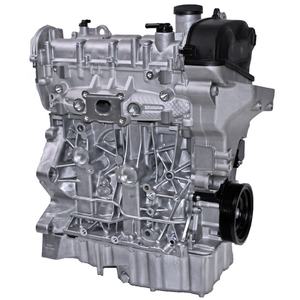Exploring the most up to date Technological Advancements in Import Engines and Exactly How They Enhance Driving Experience
In the realm of automotive engineering, the landscape of import engines is going through a profound makeover driven by cutting-edge technical technologies. From the evolution of turbocharged engines to the combination of hybrid modern technology, the most recent developments are revolutionizing the driving experience in means formerly unimaginable. As import manufacturers push the boundaries of efficiency and effectiveness via boosted fuel injection systems and innovative engine monitoring solutions, the inquiry occurs: How do these advancements really influence the method we engage with our automobiles when traveling?

Evolution of Turbocharged Engines
In the auto industry, the development of turbocharged engines has considerably transformed the landscape of performance and effectiveness. Turbocharging, when largely seen in high-performance sporting activities cars and trucks, has currently become a mainstream technology embraced by a variety of vehicles, from compact hatchbacks to luxury cars. The basic principle behind a turbocharged engine is basic yet reliable - forcibly more air into the combustion chamber, it enables even more fuel to be burned, leading to enhanced power outcome.
One of the essential advantages of turbocharged engines is their ability to supply more power from smaller sized, much more fuel-efficient engines. This downsizing pattern has caused a decrease in emissions without compromising efficiency, making turbocharging an attractive alternative for car manufacturers striving to fulfill rigid ecological guidelines. Turbocharged engines offer boosted torque at lower RPMs, offering drivers with an extra responsive and dynamic driving experience.
As modern technology remains to advancement, we can anticipate more developments in turbocharging, bring about also better degrees of performance and effectiveness in the automobile sector.
Improvements in Gas Injection Equipments
With the constant progression of automobile innovation, considerable developments have actually been made in gas shot systems. Modern fuel injection systems have actually evolved to deliver fuel extra successfully and exactly right into the engine cyndrical tubes, boosting general engine efficiency and fuel performance. Among the key developments in gas injection systems is the change from standard port gas shot (PFI) to even more advanced direct fuel injection (DFI) innovation. DFI systems infuse fuel directly into the combustion chamber at high pressures, resulting in far better gas atomization and burning, leading to boosted power result and decreased emissions.
Additionally, the assimilation of electronic control units (ECUs) and sensors in fuel injection systems has enabled real-time modifications to sustain distribution based on different variables such as engine tons, temperature, and driving conditions. This degree of accuracy guarantees optimum fuel-air mixture ratios, optimizing engine effectiveness while reducing gas consumption and exhausts. Additionally, advancements in fuel injector layout, materials, and spray patterns have actually added to cleaner burning and smoother engine operation. Finally, the continuous advancements in fuel injection systems play a crucial role in enhancing driving experience by offering improved performance, fuel economy, and ecological kindness.
Integration of Crossbreed Technology
The advancement of gas injection systems this article towards better effectiveness and performance has established the stage for the seamless assimilation of crossbreed technology right into contemporary engines. Crossbreed technology combines making use of standard inner combustion engines with electric propulsion systems, using enhanced fuel efficiency and lowered discharges. By incorporating electric motors and batteries right into the powertrain, crossbreed engines can supplement the inner burning engine during velocity or low-speed driving, therefore enhancing overall performance.

Improved Engine Management Solution
What are the crucial innovations in engine administration systems that are enhancing the efficiency and effectiveness of contemporary engines? Engine management systems have actually undertaken significant innovations to maximize engine performance and performance.
Moreover, modern-day engine monitoring systems make use of innovative formulas and expert system to examine the data accumulated by sensors and make vibrant modifications to aspects such as ignition timing, fuel injection, and turbocharger increase stress. This level of precision and versatility cause improved engine responsiveness, raised power outcome, and decreased fuel consumption.
Furthermore, engine administration systems now feature advanced analysis abilities that can detect and address issues such as misfires, sensor breakdowns, and gas system irregularities in real-time, thus boosting total engine integrity and durability. These improvements in engine he has a good point management systems play a vital duty in boosting the driving experience by providing optimal performance, gas performance, and integrity.
Effect of Lightweight Products
Integrating lightweight materials in engine production has actually reinvented the automobile market's strategy to enhancing gas effectiveness and efficiency. Making use of materials such as carbon fiber, light weight aluminum, and titanium has actually substantially lowered the total weight of engines, bring about improved power-to-weight proportions and boosted gas economic climate. These lightweight materials use a greater strength-to-weight proportion contrasted to standard products like steel, permitting greater toughness without endangering performance.
Among the vital advantages of using lightweight materials in engine building is the decrease of inertia, causing quicker engine reaction times and enhanced overall vehicle dexterity. Furthermore, the lighter weight adds to lower power intake, making vehicles more environmentally friendly by minimizing exhausts.
In addition, the implementation of lightweight materials in engine elements such as pistons, attaching poles, and crankshafts has actually enabled designers to push the borders of efficiency without compromising integrity (import engines). This advancement has actually led great site the way for extra effective and powerful engines that provide an exceptional driving experience while fulfilling strict emissions requirements
Verdict
Finally, the current technical technologies in import engines have actually significantly improved the driving experience. From the evolution of turbocharged engines to advancements in gas injection systems, integration of crossbreed modern technology, improved engine monitoring systems, and making use of lightweight materials, these advancements have collectively enhanced performance, gas efficiency, and total driving characteristics. As innovation remains to advance, we can anticipate much more exciting developments in the future of import engines.
Modern fuel shot systems have actually advanced to supply gas a lot more efficiently and precisely into the engine cylinders, improving total engine performance and fuel efficiency - import engines. By incorporating electrical motors and batteries right into the powertrain, crossbreed engines can supplement the inner combustion engine during acceleration or low-speed driving, consequently improving general performance
What are the key advancements in engine monitoring systems that are boosting the efficiency and performance of modern-day engines? Engine monitoring systems have actually undergone considerable developments to enhance engine efficiency and effectiveness. From the evolution of turbocharged engines to improvements in gas shot systems, assimilation of crossbreed modern technology, boosted engine monitoring systems, and the usage of lightweight products, these advancements have actually jointly improved efficiency, fuel performance, and general driving characteristics.